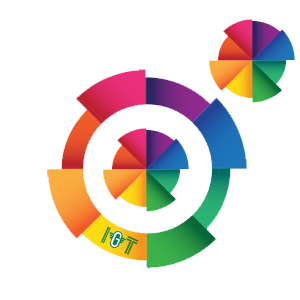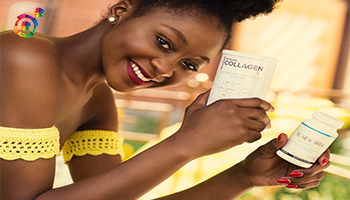
Influencer marketing certainly is not a groundbreaking concept anymore. In fact, we’re hearing this term used more and more frequently with every passing day. Yet even still, many brands are unfamiliar with how to effectively incorporate this rapidly growing tactic into their marketing plan. With a 325% increase in searches for “influencer marketing” over the last 12 months on Google alone it is becoming undeniable that this method isn’t merely a trend: it is here to stay (and brands must learn how to adjust accordingly). So if you are wondering how to effectively integrate influencers into your marketing strategy, here are three approaches to consider:
3 Ways Brands Can Integrate Influencers Into Their Marketing Strategy:
- 1. Promoting your Product or Service
- 2. Creating a Community of Repeat Influencers and Ambassadors
- 3. Inviting Influencers Into the Design Experience
1. Promoting your Product or Service
While it may seem a bit obvious or overly simplistic, hiring influencers to promote your product or service is a great starting point. In order to do this, brands must first be able to identify the right influencers who can successfully (and authentically) convey your message in a compelling way. It is incredibly important to realize that not all influencers are created equal, and there are dozens of approaches one can take to selecting the most ideal candidate. Outsourcing this identification process to a third party agency is often the most effective approach, however if you choose to select influencers on your own, be sure to look closely at their authenticity (Does the number of likes on their photos align with their audience size? Do the comments on their photos appear to be genuine, or does it look like a lot of “robot-like” responses?) There is a lot of smoke and mirrors in this industry and if brands are not careful, they can easily be seduced by a number of followers that were paid for or hiring an “influencer” who actually, isn’t very influential at all. Overwhelmed by where to start? Just look to the influencers you or your friends follow yourselves… chances are if you followed them organically, other people did too.
It would also be wise to experiment with a range of different influencer categories at first to test which is most effective for your brand. For example, a fashion label trying to associate a level of prestige with their brand may learn that working with a few elite influencers with a massive following is more effective, while a boutique skin care brand may find they do better leveraging a broader scope of influencers to diversify their reach. Playing around with different audience sizes will build your confidence and give you a clearer idea of where the “sweet spot” is for your brand.
Once you have a list of influencers you feel make sense for your brand, it is time to create a brief for the campaign so you can propose your terms for collaborating with them. Again, utilizing a third party agency to serve as a liaison provides tremendous help with the negotiation process, however you can also tackle this on your own by including the following information: Are there specifics or restrictions you want to convey to the influencers to help guide their content creation? What are the deliverables you’re asking of them? What compensation are you offering in return? What’s the turn-around time? While it can’t be guaranteed that the influencer will accept your proposal as is or that their rates will align with everything in your brief, having this as a starting point helps guide the conversation and negotiation process. At the end of the day, remember that we’re all still writing the rules a bit as we go, so if you don’t like the answers you get straight away, that doesn’t always mean you’re far off. The more you reach out and gather prices, the more you’ll get a feel for what influencers are expecting to help guide your rates.
2. Creating a Community of Repeat Influencers and Ambassadors
Once you’ve dipped your toes in the water and have some experience working with influencers, most people in the industry will agree that the best next step is to hone in on some of those pre-existing relationships that have proven to be successful. While Influencer A may have promoted your product to quadruple the people as Influencer B, you may have seen a much greater success from working with Influencer B (again, numbers aren’t always everything!) Look for the influencers who talk about your product with an effortless and authentic ease because it naturally aligns with their lifestyle. The ones who aren’t forcing anything and can organically advocate with your brand are the ones who have serious persuasion power. While it can be tempting to diversify and constantly work with new influencers to maximize your reach, it’s often more effective to invest in repeat influencers who have already proven to be a fit. Furthermore, consumers aren’t naive that sponsored Instagram posts are essentially the new print ad, so when they see an influencer post about something once – it is easy to disregard as “that’s an ad.” Yet if an influencer they love and trust continues to talk about your product over and over again, that message is more likely to stick.
Some brands take this a step further by making these influencers a more official title, such as an ambassador. This often goes beyond having them merely post on their social platforms and looks more like hiring them to attend events in person or showcase experiences on behalf of your brand. For example, American Express has become well known for it’s #AmexAmbassador program, where influencers regularly showcase the company’s rewards program by using their card while traveling and enjoying perks like an airport executive lounge. This is a smart approach because not only does it show real life experiences of the card and its perks in a storytelling format, but over time, consumers begin to associate Amex with some of their favorite influencers as they follow their journeys around the world. Building this recognition slowly over time inevitably increases the value of that brand in the consumers mind.
3. Inviting Influencers Into the Design Experience
Influencers have come a long way from merely receiving compensation for product promotion. Chances are, you already follow an influencer or two who has elevated their brand far beyond themselves. When the right brand-influencer duo find one another, the earning opportunities are endless. For example, Nordstrom has partnered with several fashion bloggers now (including Gal Meets Glam, Something Navy and Cupcakes and Cashmere to name a few) to create their own clothing lines which are available for sale in the store and online. Tricia Smith tells Fashionista “We recognized the positive response from customers [to these collaborations] and were deliberate in seeking out similar collaborations with influencers our customers know and love.” Tricia is Nordstrom’s EVP and GMM for Women’s Apparel, who brought up the Kate Moss/Topshop collaboration (Nordstrom has carried Topshop in its stores and online since 2012) and Beyoncé’s Ivy Park line as other early successful examples of selling influencer- and celebrity-driven product. We’ve also seen this done before with Lauren Conrad for Kohl’s or Alexa Chung for Madewell. The list of collaborations like this goes on and on and on…
This tactic, however, reaches far beyond fashion bloggers designing their own line and can be executed in dozens of creative ways. Recently, Coach partnered with #TheFutureProject to hire poet-turned-Instagram influencer, Morgan Harper Nichols, to collaborate with muralist Toby Triumph to paint murals in a New Jersey high school to inspire students. The Future Project is a growing national community of young people building the life and world they imagine. In addition to supporting a good cause, by Coach facilitating this partnership they were also able to amplify their brand voice in having the influencer share her experience bringing this vision to life.
If brands think beyond single advertisement models and allow influencers to become co-creators with their brand, not only does this make the influencer far more invested in the promotion of your product, but it also opens up a secondary buying audience by inviting in their followers. For example, perhaps you’re an alcohol brand piloting a book of cocktail recipes featuring your product. Why not identify relevant mixology or food + beverage influencers and invite them to create their own recipe to be featured in the book? Not only does this make your product more interesting to consumers for having recognizable names attached, but those influencers will likely be excited to share their work being published and therefore, will promote to their audiences as well.
Regardless of what level you choose to involve influencers, it is undeniable that this form of advertising deserves a spot in your brand’s 2019 marketing strategy, as it introduces tremendous potential at all stages of the consumer experience. The key is to not bite off more than you can chew straight away, while simultaneously not plateauing in a “safe zone” and potentially missing out on other opportunities you could be leveraging.




